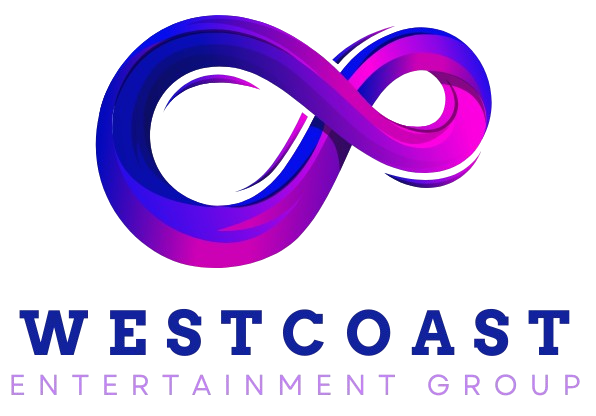Mastering Cash Flow: Understanding the Difference Between Business Loans and Lines of Credit
In the fast-paced world of entrepreneurship, mastering cash flow management is crucial for sustaining and growing your business. Understanding the difference between business loans and lines of credit can be the key to unlocking financial potential, offering you the flexibility needed to tackle both planned investments and unexpected expenses. While business loans provide structured, long-term financing options ideal for significant projects, lines of credit deliver the agility required for everyday operational needs. As we delve into these financial tools for entrepreneurs, we’ll explore how choosing the right funding options for small business can empower you to navigate the complex landscape of short-term loans and credit lines with confidence. Ready to discover which option aligns best with your business goals? Let’s dive in.
Understanding Financial Tools for Entrepreneurs
As a business owner, grasping the nuances of various financial tools is crucial for sustainable growth. Let’s explore the key differences between lines of credit and business loans, and how they impact your cash flow management.
Line of Credit vs. Business Loans
Lines of credit and business loans are two distinct financial tools that serve different purposes for entrepreneurs. Understanding their unique features is essential for making informed financial decisions.
A line of credit offers flexible access to funds up to a predetermined limit. You can draw from it as needed and only pay interest on the amount used. This revolving credit option is ideal for managing short-term cash flow needs or unexpected expenses.
Business loans, on the other hand, provide a lump sum of money that’s repaid over a fixed term with interest. They’re typically used for larger investments or specific projects with a clear ROI. Loans offer predictable repayment schedules, making them suitable for long-term financial planning.
Here’s a quick comparison:
|
Feature |
Line of Credit |
Business Loan |
|---|---|---|
|
Purpose |
Short-term needs |
Long-term investments |
|
Flexibility |
High |
Low |
|
Interest |
On used amount |
On full amount |
|
Repayment |
Revolving |
Fixed term |
The Role of Cash Flow Management
Effective cash flow management is the lifeblood of any successful business. It involves monitoring, analyzing, and optimizing the movement of money in and out of your company.
Proper cash flow management allows you to:
-
Meet financial obligations on time
-
Invest in growth opportunities
-
Weather unexpected financial storms
By leveraging financial tools like lines of credit and loans strategically, you can maintain a healthy cash flow. This balance ensures you have the funds needed for day-to-day operations while also planning for future expansion.
Remember, the key is to match the financial tool with your specific needs. Short-term cash flow gaps might be best addressed with a line of credit, while major equipment purchases could warrant a business loan.
Exploring Funding Options for Small Business
Small businesses have a variety of funding options available, each suited to different needs and situations. Let’s examine the pros and cons of short-term loans and delve into long-term financing options.
Short-Term Loans: Pros and Cons
Short-term loans can be a valuable tool for businesses needing quick access to capital. These loans typically have repayment terms of 3 to 18 months and are designed to address immediate financial needs.
Pros of short-term loans:
-
Quick approval and funding process
-
Less stringent qualification requirements
-
Flexibility in use of funds
Cons of short-term loans:
-
Higher interest rates compared to long-term options
-
More frequent repayment schedules
-
Potential for debt cycle if not managed properly
When considering a short-term loan, it’s crucial to have a clear repayment plan. These loans can be ideal for seasonal inventory purchases or covering unexpected expenses, but they shouldn’t be relied upon for long-term financial stability.
Long-Term Financing Options Explained
Long-term financing options provide businesses with substantial funds for major investments or expansions. These loans typically have repayment terms of 1 to 25 years, depending on the lender and loan type.
Common long-term financing options include:
-
Traditional bank loans
-
SBA loans
-
Equipment financing
-
Commercial real estate loans
Long-term loans often offer lower interest rates and more manageable monthly payments compared to short-term options. However, they usually require more extensive documentation and have stricter qualification criteria.
Consider long-term financing for:
-
Purchasing commercial property
-
Expanding to new locations
-
Acquiring another business
-
Investing in major equipment upgrades
Remember, while long-term loans provide stability, they also represent a significant commitment. Careful financial planning is essential to ensure the investment aligns with your business’s growth trajectory.
Making Informed Financial Decisions
Choosing the right financial tool for your business requires careful consideration of your current needs, future goals, and overall financial health. Let’s explore how to make the best choice between loans and credit lines, and navigate the landscape of lenders and loan programs.
Choosing Between Loans and Credit Lines
Deciding between a loan and a line of credit depends on your specific business needs and financial situation. Here are key factors to consider:
-
Purpose of funds: Loans are better for one-time, large purchases, while lines of credit suit ongoing or fluctuating expenses.
-
Repayment flexibility: Credit lines offer more flexibility, allowing you to borrow and repay as needed. Loans have fixed repayment schedules.
-
Interest rates: Lines of credit often have variable rates, while loans can offer fixed rates for more predictable payments.
-
Approval process: Lines of credit may require a more extensive approval process but offer ongoing access to funds. Loans typically involve a one-time approval for a specific amount.
Consider your business’s cash flow patterns and future plans when making this decision. A combination of both tools might be the best strategy for comprehensive financial management.
Navigating Lenders and Loan Programs
Exploring various lenders and loan programs is crucial to finding the best financial solution for your business. Here’s a guide to help you navigate this landscape:
-
Research different lender types:
-
Traditional banks
-
Online lenders
-
Credit unions
-
Government-backed programs (e.g., SBA loans)
-
-
Compare loan terms and conditions:
-
Interest rates
-
Repayment periods
-
Fees and charges
-
Collateral requirements
-
-
Assess your qualifications:
-
Credit score
-
Time in business
-
Annual revenue
-
Available collateral
-
-
Prepare necessary documentation:
-
Business plan
-
Financial statements
-
Tax returns
-
Bank statements
-
Remember, the cheapest option isn’t always the best. Consider factors like customer service, flexibility, and the lender’s understanding of your industry when making your decision.
“The right lender should be a partner in your business’s growth, not just a source of funds.” – Financial expert
By thoroughly understanding your options and carefully evaluating lenders, you can secure the financial tools that will best support your business’s success and growth.

